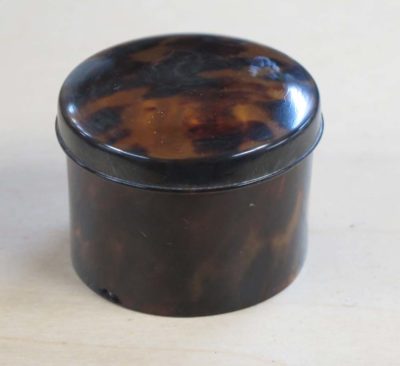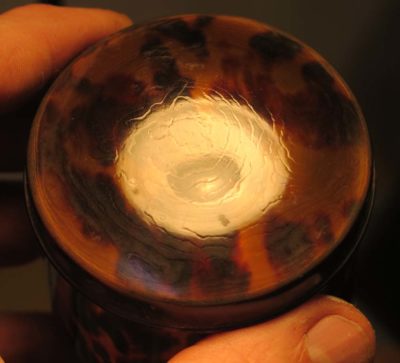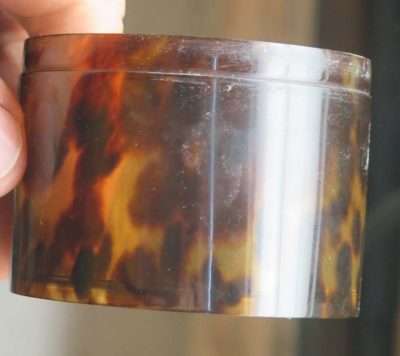Which Sea Turtle Did That Tortoiseshell Come from?

Recently I was puttering around my basement shop in my daughter’s home and came across a lovely little tortoiseshell box. My first response was to wonder where I bought it (I cannot remember, it was very many years ago). My second response was, “Hmm. I wonder where my box of other tortoiseshell boxes and vintage lacquer boxes is? I sorta know the answer to that one is, “Somewhere in the barn. You just haven’t unpacked it yet.”
A third observation leaped at me as soon as I got the little round box out into the light; it was a wleded box, scraped and turned on a lathe, made from a scute (plate) from the carapace (back shell) of a hawksbill sea turtle. What we call tortoiseshell comes from one of two sea turtles, hawksbill and greenback, the different shells being as different in morphology from each other as are the habits and diets of the two turtles.
In terms of its constituent components, if you thought of a piece of tortoiseshell as a fingernail with freckles you would not be far off. The main structural difference is that your fingernail grows in a linear pattern from the bed of the nail, while a tortoiseshell grows as a full layer across its entire area. For reasons that remain unclear to me, even after lengthy discussions with herpetologists, why the nature of the two species’ scutes are so different.
Tortoiseshell from a greenback is usually only 1/32″ or so thick and pretty uniform in that thickness. In other words, they do not build up much thickness. Hawksbill scutes on the other hand can reach more than a quarter inch in thickness at their center, and a part of the craft in tortoiseshell-work was the ability to split and delaminate the hawksbill shells for greater yield.
And, since hawksbill shells are comprised of an ever-increasing number of layers, when that shell is worked and mechanically thinned with scrapers or abrasives the layers are not penetrated with perfect evenness. The result is a pattern that is often called “watermark” in other contexts, paper and silk for example. Sometimes the pattern is difficult to discern, I have tried many times to show this to conservation students with varying levels of success. It really is trying to find a pattern of shadows lurking deep in the mass of the shell.

Fortunately for this post my little round box’s watermark pattern was impossible not to see on the outside of the top.

The inside of the bottom was a bit trickier, but the watermark pattern is there too.

On the outside of the welded and turned the watermark was just a shadow hiding just below the surface.
Now you know.


Join the Conversation!